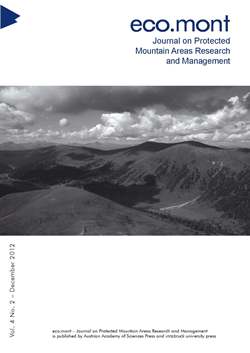
Eco.mont Vol. 4 Nr. 2, pp. 41-44, 2012/06/01
Journal on Protected Mountain Areas Research and Management

The mixed forest of the locally protected Aigner Park in the city of Salzburg, Austria, is a good example of a perfect fire salamander habitat. It provides ideal habitat conditions for the aquatic and terrestrial life of this threatened amphibian species. It was therefore chosen as the study site for long-term larval monitoring and for defining the best conditions for larval detectability. Monitoring started in 2010 in the Schwarzenbach first-order stream and is still in progress. In 2012, it was possible to show for the first time the dependence of larval detection rates on the time of day and on weather conditions. Hence, nightly counts in the main larval season (April – May), in combination with dry weather conditions, can be recommended for future larval monitoring studies. Involving local school children in the field work raised and increased their awareness of this amphibian species and nature protection in general. Once more it was shown that successful conservation is only possible by involving the public, starting with the children, who are responsible for future protection. Altogether, the Sparkling Science Project turned out to be a perfect way to attain this goal.
Keywords: Salamandra salamandra-salamander larvae-monitoring-larval detectability-environmental education